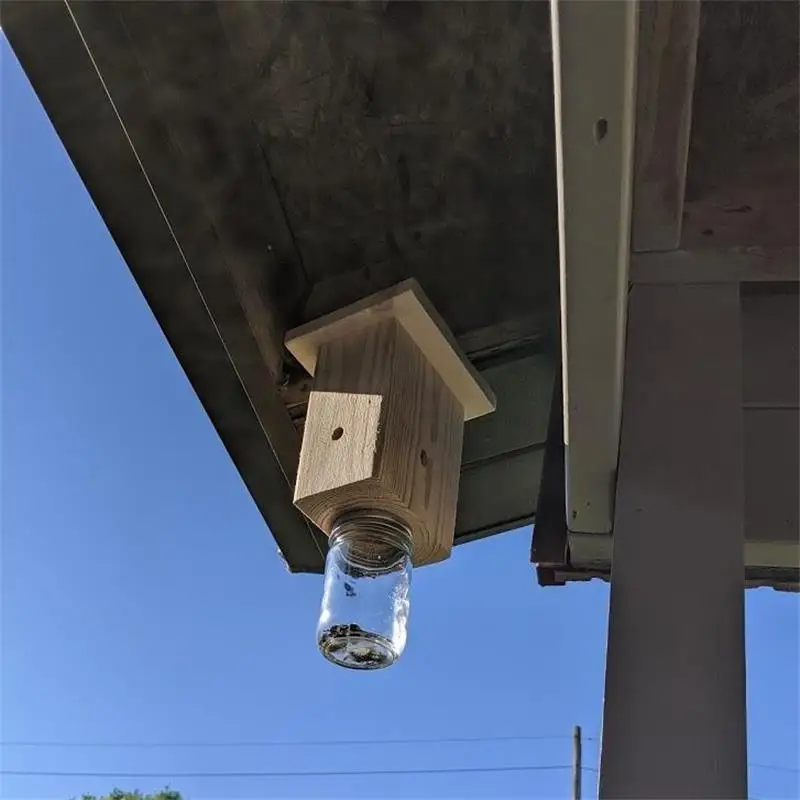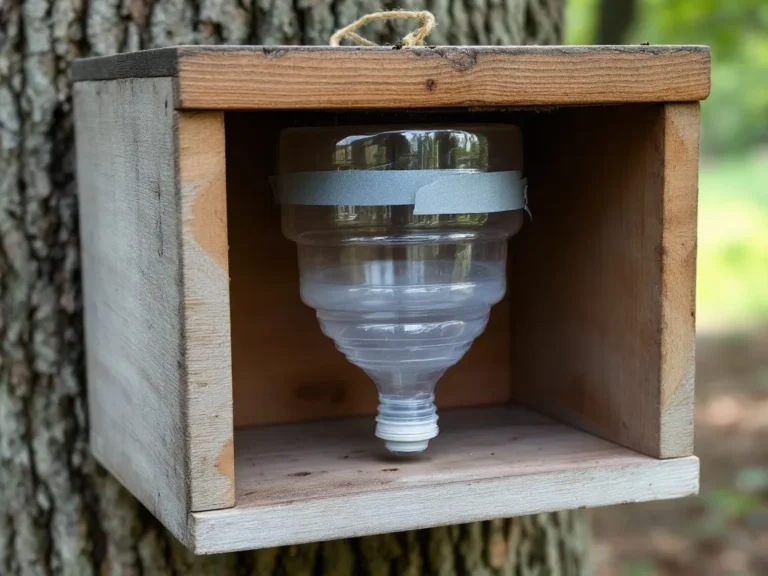Imagine stepping into your backyard on a sunny day, ready to enjoy the peace of your outdoor space, only to notice small holes marring the wood of your deck or fence. It’s a frustrating sight—one that many homeowners know all too well. These tiny intrusions are the work of carpenter bees, and while they may seem like minor nuisances, they can lead to significant damage over time.
But there’s good news: you don’t have to resort to harsh chemicals or expensive repairs to protect your home. Wooden carpenter bee traps offer a simple, natural solution that not only helps keep these pesky bees at bay but also preserves the beauty and integrity of your wooden structures. In this post, we’ll explore why these traps are the best choice for safeguarding your home, providing peace of mind and a more enjoyable outdoor experience.
Understanding Carpenter Bees
Carpenter bees, unlike their honeybee cousins, are solitary insects that don’t live in hives. Instead, they bore into wood to create nesting tunnels, which can weaken structures over time. These bees are particularly attracted to untreated, softwood surfaces like cedar, pine, and redwood.
Why Are Carpenter Bees a Problem?
While they don’t eat wood, carpenter bees can cause extensive damage by burrowing into wooden structures. Over time, these tunnels can lead to structural weakening, and if left unchecked, the damage can become costly to repair. Additionally, the holes created by carpenter bees are often reused year after year, compounding the damage.
Why Wooden Traps Are Effective
Wooden carpenter bee traps are specifically designed to mimic the bees’ natural nesting habits, making them an effective solution for controlling infestations. These traps typically consist of a wooden block with angled holes that lead into a clear plastic chamber. The bees enter the holes, mistaking them for potential nesting sites, but once inside, they are unable to escape.
Natural Appeal of Wood
Carpenter bees are naturally attracted to wood, which makes wooden traps particularly effective. The wood used in these traps is similar to what the bees would choose for nesting, increasing the likelihood that they’ll enter the trap.
Eco-Friendly and Non-Toxic
One of the biggest advantages of wooden carpenter bee traps is that they are eco-friendly. Unlike chemical pesticides, which can harm other insects and animals, wooden traps target only carpenter bees, without posing a risk to the environment or other beneficial insects.
Types of Wooden Carpenter Bee Traps
There are several types of wooden carpenter bee traps available, each with its own unique design and features. Here’s a breakdown of the most common types:
- Standard Wooden Trap: The most basic version, featuring a wooden block with drilled holes leading to a clear plastic chamber. Simple, effective, and widely available.
- Decorative Wooden Trap: These traps are designed to blend in with your outdoor décor, often taking the form of birdhouses or lanterns. They combine functionality with aesthetics, making them a popular choice for homeowners.
- DIY Wooden Traps: For those who prefer a hands-on approach, DIY wooden carpenter bee traps are a great option. These traps can be made from scrap wood, using basic tools and materials.
- Multi-Trap Systems: For larger properties or severe infestations, multi-trap systems offer a more comprehensive solution. These setups include several traps strategically placed around your property to maximize coverage.
How to Choose the Right Trap for Your Home
Choosing the right wooden carpenter bee trap depends on several factors, including the size of your property, the severity of the infestation, and your personal preferences.
Consider the Infestation Size
For smaller infestations, a single standard trap may suffice. However, if you’re dealing with a larger problem, consider using multiple traps or a multi-trap system.
Location Matters
Place traps in areas where carpenter bees are most active, such as under eaves, along fences, or near wooden decks. The closer the trap is to the bees’ preferred nesting sites, the more effective it will be.
Curious about the best places to set up your traps? Continue reading in Mastering Carpenter Bee Trap Placement for expert tips and tricks!
Aesthetic Preferences
If you’re concerned about the appearance of traps around your home, opt for a decorative wooden trap that blends in with your outdoor space.
Budget Considerations
Wooden carpenter bee traps are generally affordable, but prices can vary depending on the design and features. DIY traps can be a cost-effective alternative if you’re on a tight budget.
Installation and Maintenance Tips
Proper installation and maintenance are key to ensuring your wooden carpenter bee traps work effectively.
Installation Tips
- Place Traps Early: Install traps in early spring, before carpenter bees begin nesting.
- Positioning: Hang traps under eaves or near existing bee activity. Ensure the entrance holes are angled downward to prevent water from entering.
- Avoid Obstructions: Make sure the traps are not obstructed by branches or other structures.
Maintenance Tips
- Regular Monitoring: Check the traps regularly to ensure they are functioning properly. If the trap is full, empty the chamber to make room for more bees.
- Replacement: Replace traps as needed, especially if the wood becomes damaged or the trap is no longer effective.
FAQs
How do wooden carpenter bee traps work?
Wooden carpenter bee traps mimic the bees’ natural nesting sites. The bees enter the wooden holes, but once inside, they are trapped in a clear plastic chamber from which they cannot escape.
Where should I place carpenter bee traps around my home?
Traps should be placed near areas where carpenter bees are active, such as under eaves, along wooden fences, or near wooden decks.
Can I make a wooden carpenter bee trap myself?
Yes, DIY traps are a popular option. They can be made using scrap wood, a drill, and some basic materials.
How often should I replace my carpenter bee traps?
Replace traps as needed, typically once they are full or if the wood becomes damaged.
Are wooden carpenter bee traps safe for the environment?
Yes, wooden traps are eco-friendly and non-toxic, posing no harm to the environment or other beneficial insects.
Final Toughts
Wooden carpenter bee traps offer a simple, effective, and eco-friendly solution for protecting your home from carpenter bee damage. By understanding the behavior of these bees and choosing the right trap, you can safeguard your property and prevent costly repairs. Don’t wait until the damage is done—take action now to protect your home with the best wooden carpenter bee traps available.





